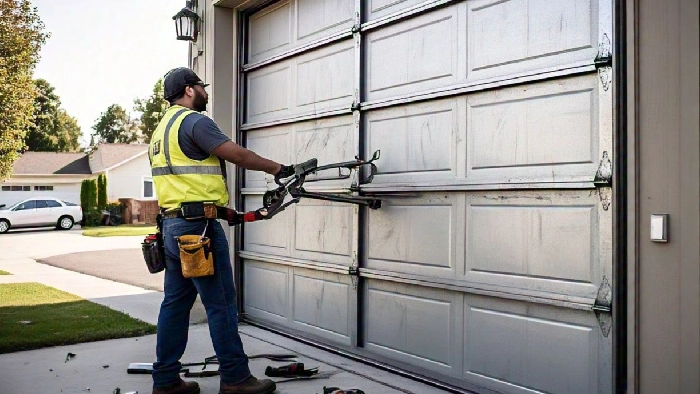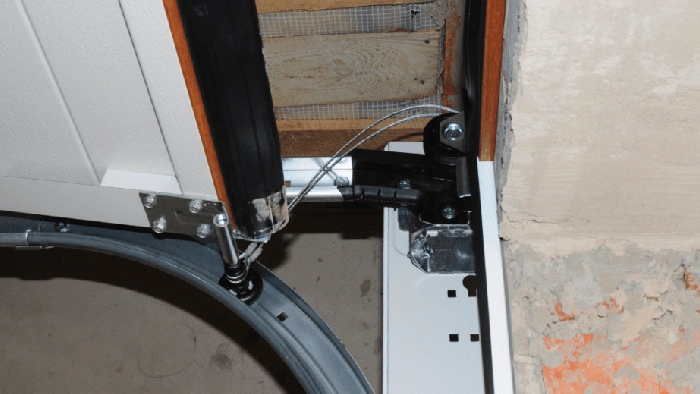Is It Possible to Replace a Torsion Spring Yourself in Los Angeles? A Guide
Introduction: Understanding Torsion Springs in Garage Doors
Garage doors are an essential part of our homes, providing security and convenience. However, like any other mechanical system, they can encounter issues over time. One common problem homeowners face is a broken torsion spring. In this guide, we’ll explore the ins and outs of replacing a torsion spring yourself in Los Angeles, giving you the knowledge and confidence to tackle this task head-on.
Is It Possible to Replace a Torsion Spring Yourself in Los Angeles? A Guide
Yes, it is indeed possible to replace a torsion spring yourself in Los Angeles. However, it’s crucial to understand that this process involves certain risks and complexities. Torsion springs are under significant tension and can cause injuries if not handled correctly. For the average homeowner, the task can be daunting. But with the right tools, knowledge, and safety precautions, it’s manageable.
Why Do Torsion Springs Break?
Before diving into the replacement process, let’s discuss why torsion springs break in the first place:
- Wear and Tear: Over time, torsion springs can lose their elasticity.
- Rust or Corrosion: Exposure to moisture can cause rusting.
- Improper Maintenance: Lack of regular maintenance can lead to premature failure.
Understanding these factors is vital as it helps you take preventive measures in the future.
Tools Required for Replacing a Torsion Spring
To successfully replace a torsion spring yourself, you’ll need several tools:
Having these tools on hand will make your DIY project go smoothly.
Safety Precautions When Handling Torsion Springs
Safety should always be your top priority when dealing with mechanical systems like garage doors:
- Always wear protective gear.
- Ensure that the garage door is fully closed before starting work.
- Disconnect the garage door opener to prevent accidental activation.
By following these safety tips, you can significantly reduce the risk of injury during your repair process.
Step-by-Step Guide to Replace a Torsion Spring
Replacing a torsion spring involves several key steps:
1. Disconnect Your Garage Door Opener
The first step is disconnecting your garage door opener from its power source. This ensures that there won’t be any unexpected movements while you’re working on the door.
2. Remove the Old Spring
Using your wrenches or sockets, loosen the bolts securing the old spring and carefully remove it from its position.
3. Install the New Spring
Place the new torsion spring onto its bracket carefully while ensuring it's positioned correctly according to manufacturer specifications.
4. Wind Up the New Spring
This step requires utmost precision! Use your torsion rod to wind up the new spring according to your garage door's specifications (usually about 30 turns).

5. Reattach Everything Securely
Once everything is back in place and secured with bolts, reattach any components removed earlier.
Common Mistakes When Replacing a Torsion Spring
Even experienced DIYers can make mistakes garage door repair with spring replacement during this process:
- Not following safety protocols
- Underestimating tension levels
- Using improper tools
- Ignoring installation guidelines
Awareness of these pitfalls will help you avoid common errors when replacing your garage door's torsion spring.
When Should You Call a Professional?
While DIY repairs can be satisfying and cost-effective, there are scenarios where calling for professional help is wise:
- If you're uncomfortable with high-tension parts
- If you lack necessary tools or experience
- If multiple components are damaged
In such cases, seeking expert assistance from local services offering garage door opener repair or garage door broken spring repair may save you time and potential injury.
Costs Involved in DIY vs Professional Replacement
Here’s an overview comparing DIY costs versus hiring professionals:
| Aspect | DIY Cost ($) | Professional Cost ($) | |---------------------------|---------------|-----------------------| | Tools | 50 - 150 | N/A | | Parts (Torsion Spring) | 30 - 100 | Included | | Labor | N/A | 150 - 300 | | Total Estimated Cost | 80 - 250 | 150 - 300 |

While doing it yourself might save money upfront, consider factors like time investment and potential risks involved before making a decision.
FAQs About Replacing Torsion Springs in Los Angeles
Q1: How long does it take to replace a torsion spring?
A1: Typically, replacing a torsion spring takes about two hours if you're familiar with garage door mechanics; however, beginners may require additional time for learning curves.
Q2: Can I use any type of spring for my garage door?
A2: No! It’s essential to use compatible springs specific to your garage door model for optimal performance and safety.
Q3: What signs indicate that my torsion springs need replacement?
A3: Look out for signs like uneven movement of doors, loud noises during operation, or visible wear on the springs themselves.
Q4: Is it safe to attempt replacing springs without prior experience?
A4: While possible, it's risky due to potential injuries from high-tension components; if unsure, consult professionals who specialize in garage door repair spring replacement.
Q5: How often should I get my garage door maintained?
A5: Ideally once every year; however, if you've noticed changes in performance or wear signs sooner than that would also warrant attention!
Q6: Are there warranties for new springs purchased?
A6: Most reputable manufacturers provide warranties ranging from one year up to lifetime guarantees depending on quality!
Conclusion: Empowering Yourself with Knowledge on Garage Door Repairs
Navigating through home repairs can seem overwhelming at times; however—armed with information—you can confidently approach tasks such as replacing a torsion spring yourself. Just remember always prioritize safety while being mindful of potential challenges along this journey!
If ever uncertain about tackling such projects alone don't hesitate contacting experts specializing in garage door opener repair Los Angeles. With careful consideration towards both options available—DIY versus professional service—you'll ensure smooth operation within your home's vital systems all year round!
Remember that regular maintenance plays an important role too; keeping those pesky breakdowns at bay ensures peace-of-mind knowing everything works as intended!
